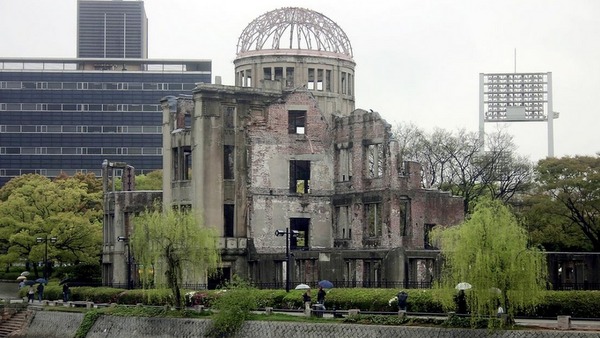
HIROSHIMA, Japan – Approaching what was once the Hiroshima Prefecture Industrial Promotion Hall – today known as the A-Bomb Dome – on a rainy day is an eerie feeling.
At 8:15 a.m. on Aug. 6, 1945, above this very spot, the first atomic bomb was dropped on a city, giving Hiroshima a dubious distinction in the annals of history. The blast produced a mushroom cloud and killed 140,000 people and left thousands more homeless. Three days later, the U.S. dropped a second bomb on Nagasaki, which killed an estimated 80,000 people, closing the chapter on the second World War.
Today, the city remains known for its role at the end of World War II, but it has also grown into a major tourist attraction. Each year, thousands of visitors from Japan and around the world flock to this western Japanese city to learn about what happened here and how Hiroshima has helped shape history.
While atomic weapons no doubt remain a controversial subject, it is possible – and worthwhile – to take in Hiroshima and understand the historical significance of the city without spending too much time discussing the pros and cons of nuclear warfare. For history buffs and travelers looking to see and understand what happened here, to Japan and to the whole world on that day 67 years ago, there are several memorials to the bombing, all located in Peace Memorial Park in the center of the city and near the bomb’s hypocenter:
– The Bell of Peace: This bell is rung at 8:15 a.m. every Aug. 6 to mark the anniversary of the city’s bombing. Visitors also are welcome to ring the bell for world peace. The bell’s world map is drawn without borders to emphasize unity.
– Cenotaph for the A-bomb Victims: Built on Aug. 6, 1952, this memorial dedicated to those who died in the bombing is the centerpiece of the city’s mission: Peace. The memorial includes a stone chest with the names of everyone who was killed in the bombing, and an inscription on it generally is translated to mean, “Let all the souls here rest in peace, for we shall not repeat the evil.”
– Atomic Bomb Memorial Mound: The mound includes the ashes of 70,000 of the people who were killed in the bombing, a stark reminder of the magnitude of that day.
– A-Bomb Dome: Formerly the Hiroshima Prefecture Industrial Promotion Hall, this building was completed in April 1915, and was located near the bomb’s hypocenter. It is one of the few buildings to survive the blast. Historic photographs of the city show a landscape flattened by the blast, with just a few structures still standing – one being the shell of the Industrial Promotion Hall. But, the building, which has not changed significantly since the bombing, is just one of a few important landmarks dedicated to Aug. 6, 1945.
– Hiroshima Peace Memorial Museum: Built after World War II, the museum is dedicated to the atomic bombing of the city and to the war. Though the museum presents history from a Japanese perspective, it includes exhibits and information detailing Japanese aggression throughout Asia leading up to World War II. The museum also includes copies of letters the city’s mayors have written to leaders of various countries, opposing their successful tests of an atomic weapon. The mayors are advocates for an atomic bomb-free world.
Also located in Peace Memorial Park, the Peace Flame will not be extinguished until all atomic bombs are eliminated from the Earth.
Over the past 60 years, Hiroshima has rebuilt itself as a modern, cosmopolitan city. Though it’s nowhere near as large as Tokyo, Hiroshima has all the amenities of a large city, and it’s retained one amenity that most Japanese cities have done away with: its streetcar system. The Hiroshima Electric Railway, or Hiroden as it’s known in Japan, only carries a small percentage of the city’s 1.1 million residents, but it is a great way to travel around the city.
It may not be the fastest mode of transportation, but the streetcar system connects Peace Memorial Park with the JR Hiroshima station, making these sites easily accessible from almost anywhere in Japan.
Following the atomic bombing of the city on Aug. 6, 1945, the streetcar system was among the first of the city’s services to be restored. Service between two stations – Koi and Nishi-tenma-cho – restarted just three days after the bombing, returning some semblance of normalcy – albeit a small one – to the city. The system’s main lines were operational within about two months of the bombing.
Over the years, the Hiroshima Electric Railway has modernized its streetcar fleet, but there are still a number of older trolleys; that has prompted railfans to dub the streetcar system a “Moving Museum.” Interestingly, in the 1960s, the city started buying streetcars from other cities, so some of the older streetcars that operate over the Hiroshima Electric Railway today once carried passengers in any number of cities throughout Japan.



